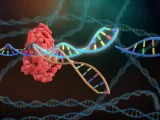
CRISPR Clinical Trials: Progress in Gene Editing Therapies
February 21, 2025CRISPR-Cas9 gene-editing technology has revolutionized biomedical research, offering a precise, efficient, and relatively cost-effective method for modifying genes. This breakthrough has paved the way for clinical applications, and several CRISPR-based therapies are currently in advanced clinical trials, targeting genetic disorders and certain cancers.
1. CRISPR-Based Therapies for Blood Disorders
One of the most promising areas of CRISPR clinical trials is the treatment of inherited blood disorders such as sickle cell disease (SCD) and beta-thalassemia. These disorders result from mutations in the gene encoding beta-globin, a key component of hemoglobin, leading to anemia and other severe complications.
Sickle Cell Disease (SCD):
- SCD is caused by a single-point mutation in the HBB gene, leading to the production of abnormal hemoglobin (HbS), which causes red blood cells to become rigid and form a sickle shape.
- CRISPR-based therapies, such as exa-cel (exagamglogene autotemcel) (formerly CTX001), developed by Vertex Pharmaceuticals and CRISPR Therapeutics, aim to increase fetal hemoglobin (HbF) levels in red blood cells.
- This is achieved by editing the BCL11A gene in hematopoietic stem cells (HSCs), which suppresses HbF production. By knocking out BCL11A, patients can regain fetal hemoglobin expression, reducing sickling and improving oxygen transport.
- Clinical trials have demonstrated promising results, with patients achieving sustained increases in fetal hemoglobin levels and showing significant reductions in pain episodes and transfusion requirements.
Beta-Thalassemia:
- Similar to SCD, beta-thalassemia results from mutations in the HBB gene, leading to insufficient hemoglobin production.
- CRISPR-based therapies, particularly exa-cel, use the same BCL11A gene-editing strategy to increase HbF levels, compensating for defective beta-globin production.
- Patients with transfusion-dependent beta-thalassemia (TDT) have responded well to CRISPR therapies, with some achieving independence from blood transfusions.
These treatments have reached late-stage clinical trials, and regulatory approvals are anticipated soon, making them among the first CRISPR-based therapies to be widely available.
2. CRISPR in Cancer Therapy
CRISPR is also being explored as a potential therapy for certain cancers, particularly in enhancing immune cell-based treatments.
CRISPR-Modified CAR-T Cells:
- Chimeric Antigen Receptor T-cell (CAR-T) therapy is a form of immunotherapy that engineers a patient’s T cells to target and destroy cancer cells.
- CRISPR enhances CAR-T therapy by:
- Removing immune checkpoints such as PD-1, which cancers exploit to evade immune attack.
- Improving T-cell persistence and function by editing genes involved in immune response.
- Clinical trials using CRISPR-edited CAR-T cells have shown promise in treating blood cancers such as leukemia and lymphoma.
CRISPR-Based Solid Tumor Treatments:
- Solid tumors present unique challenges, such as resistance to immune infiltration. CRISPR is being tested to improve immune response against these tumors.
- Early-phase trials are investigating gene-edited T cells designed to enhance tumor targeting in cancers such as melanoma and lung cancer.
3. CRISPR for Rare Genetic Diseases
Beyond blood disorders and cancer, CRISPR is being explored for treating rare genetic diseases, including:
- Leber Congenital Amaurosis (LCA10):
- A rare genetic disorder causing blindness, treated using EDIT-101, a CRISPR therapy developed by Editas Medicine.
- The therapy directly edits the CEP290 gene in the retina to restore vision.
- Duchenne Muscular Dystrophy (DMD):
Conclusion
CRISPR-based therapies are rapidly advancing through clinical trials, particularly in treating genetic blood disorders, cancers, and rare diseases. As these therapies continue to show success in clinical studies, they are expected to receive regulatory approvals, bringing gene-editing treatments to mainstream medicine and offering hope for patients with previously incurable conditions.













